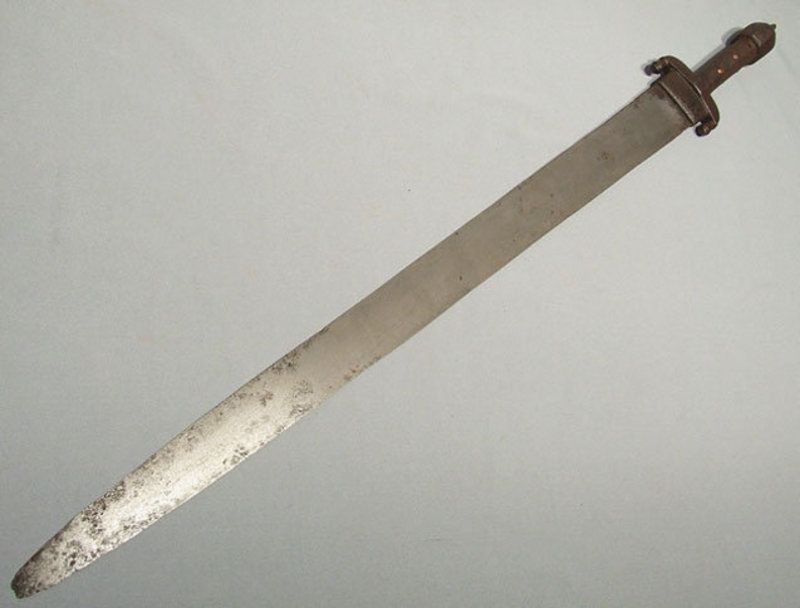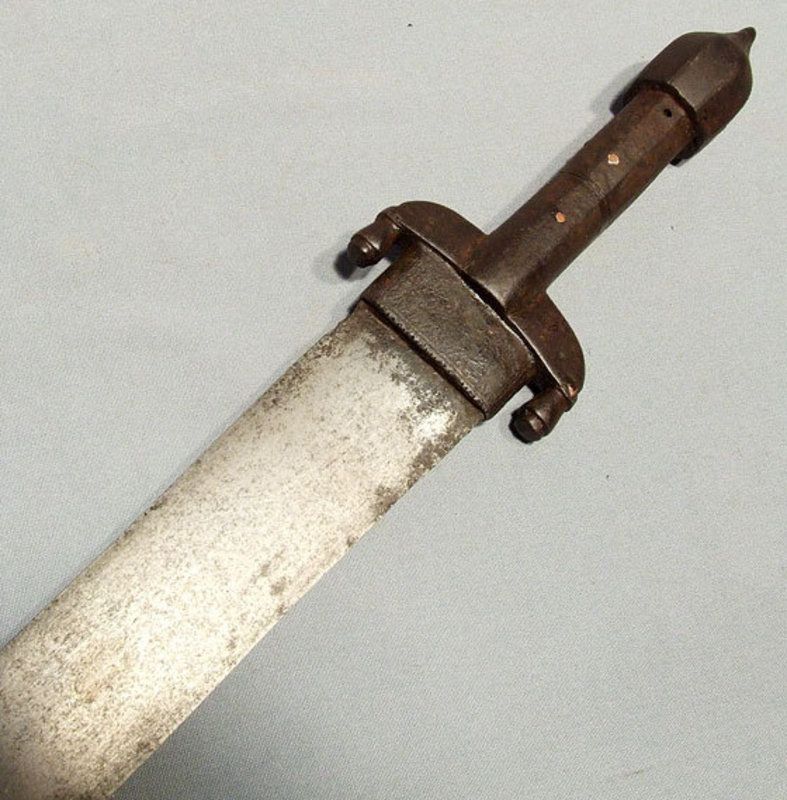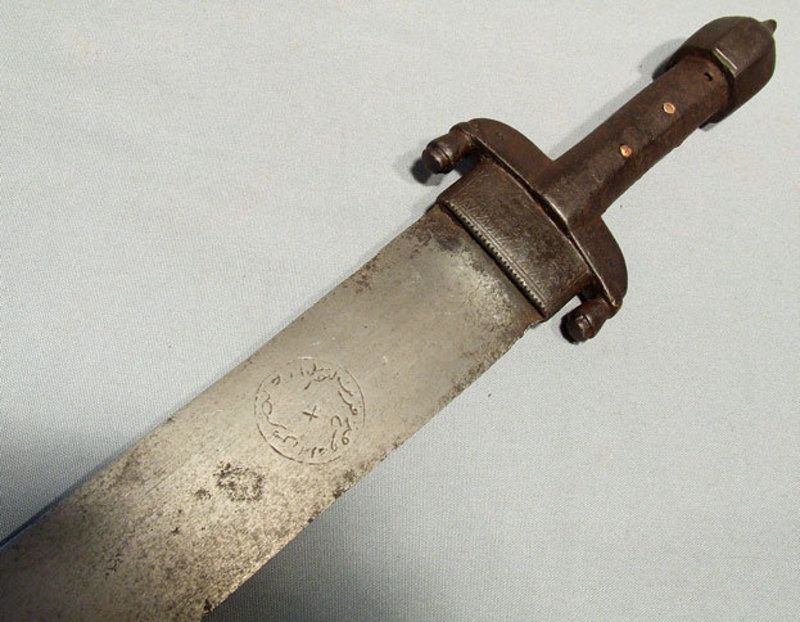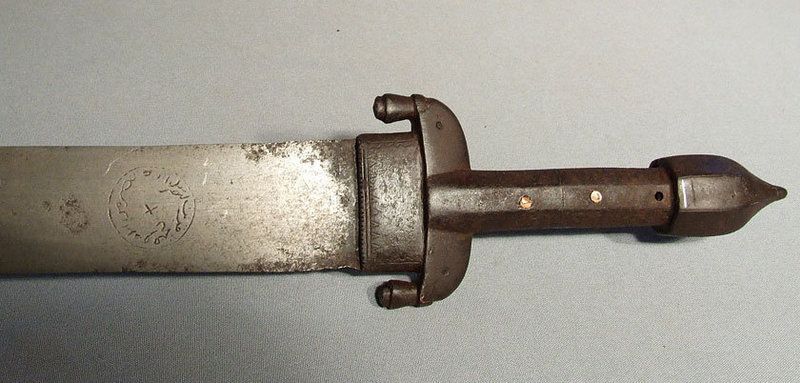14th-17th century Islamic Sword Arab Kattara
Aug 23, 2013 13:19:17 GMT
Post by Jack Loomes on Aug 23, 2013 13:19:17 GMT




TEXT AS EXTRACTED FROM SOURCE:
Extremely rare antique Islamic Arab sword Kattara. Another similar Kattara sword is in the collection of the Furusiyya Art Foundation, this collection possesses very important Islamic Arms and Armour material, as described in the book-catalogue by the foundation, such important items are not to be found in other collections or museums. The title of this splendid book - catalog is, The Arts of the Muslim Knight – The Furusiyya Art Foundation Collection Concept and direction by Bashir Mohamed Printed and bound in Italy, First edition. Furthermore, the sword which we are proudly offering for sale is in an untouched condition with the Islamic calligraphic script, which the sword in The Furusiyya Art Foundation Collection does not have, so making this sword a real gem in any important collection of antique arms and armour or Islamic Art. REFERENSES: According to David Alexander, one of the leading experts on Islamic arms and armour where he describes a related sword in the Nasser D.K Khalili Collection in the book "The Arts of War" by David Alexander, swords of this type were used in Oman and the Gulf area from 1000 A.D. until the17th-18th century and can be seen in early Arab paintings such as a miniature in a copy of the Maqamat of al-Hariri, c.1225-35 A.D. For example an almost identical sword dated to the 12th-14th century is published in the Sotheby's catalogue of Islamic and Indian Art London 24-25 April 1991 lot 1113. The shape of the hilt became traditional in much of the Islamic world and can be seen for example in Nasrid swords of the 15th century, although this example has simple tubes in place of the dragon head quillons, it is probable that all ultimately derive from the sword of the Prophet. Since a sword was an expensive weapon and in the Islamic country the quality and the function of the sword was more important than the style or fashion, some types of swords continued to be popular for a century, for example the Persian Shamshir or Indian Talwar were used for a few hundred years and were passed from father to son and were used by the next generations, hence swords made earlier were still used after hundreds of years. DETAILS: An iron hilt with an octagonal grip attached to the tang by two rivets and a hole for the wrist strap with an octagonal peaked conical pommel showing remnants of silver inlay, the cross guard block is shoulder – shaped with down turned quillons. The blade is straight and is double-edged and has a cuff around its top, as most of these types of swords, and is decorated on the forte with a round medallion containing Arabic inscription. . REFERENSES:Askeri Museum Istanbul Turkey.inv.nos.2382 and 7620; for the latter see Alexandr 1985,no75 and Fig.4;other examples include Topkapi Sarayi Museum ,Istanbul,no1/2765;Wallace Collection, London England ,no1796;The Metropolitan Museum of Art,New York,no1987.43;and Splendeur des armes orientales 1988,no11 and Elgood, 1994,nos 2.13 and 2.15..MEASUREMENTS: The overall length is 87.7 cm (34 ½ in). Width of the blade at the widest point: 5.4 cm (2 1/16 inches).
Source: www.trocadero.com/101antiques/items/747179/item747179.html

.png?width=1920&height=1080&fit=bounds)